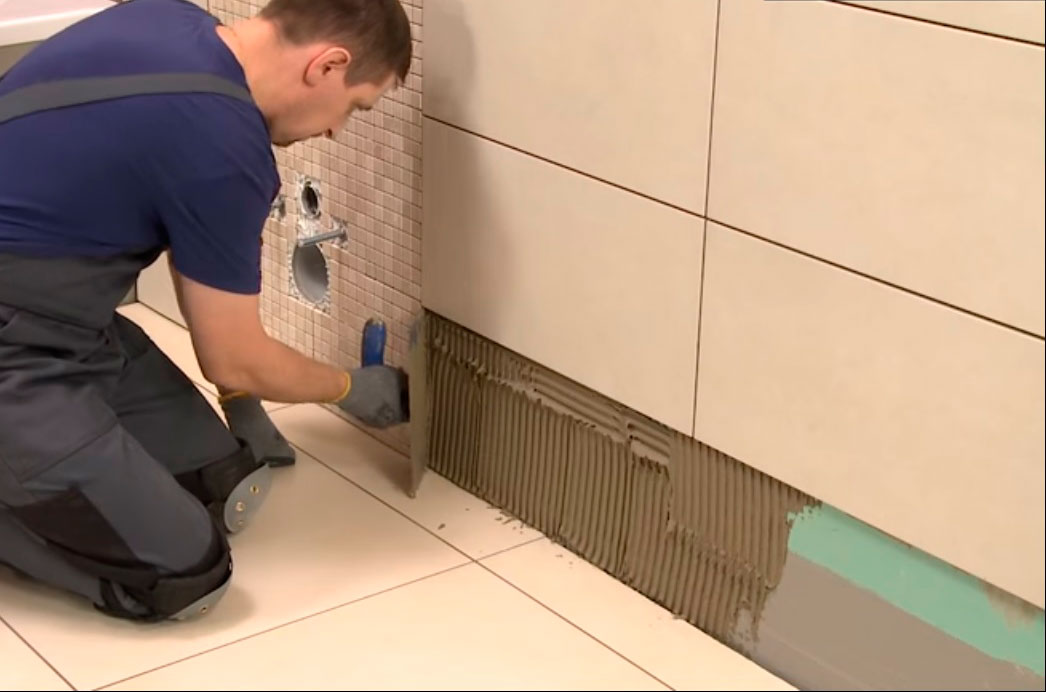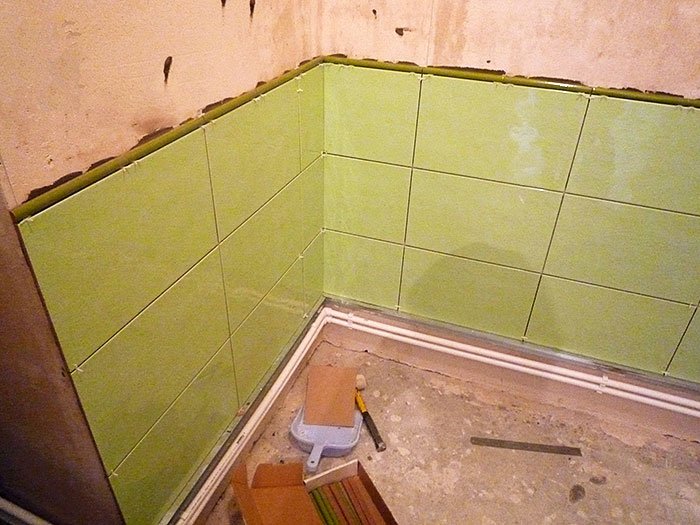Thickness of floor tiles with adhesive
Floor tiles are a very interesting and practical solution. This type of flooring has a number of advantages, including high strength. Modern manufacturers offer a wide variety of different options, which vary in both quality and size.

The content of the article
Types of floor tiles
Conventionally, two main categories of this type of material can be distinguished:
- Ceramic - the most common when used in residential areas.
- Porcelain tiles are more often used in industrial premises.
Ceramic products are not intended for use under heavy loads, therefore, where there is a lot of traffic, this option should not be used. This tile is more suitable for home use.
Porcelain tiles are characterized by high levels of resistance to mechanical stress. This allows the use of porcelain stoneware even in industrial premises, where a large load is placed on it.

REFERENCE. When purchasing tiles for laying on the floor indoors, it is recommended to choose packs from the same batch, since the color and size may vary slightly in different batches, but in the end this will be noticeable.
Popular ceramic sizes
Manufacturers produce tiles in various sizes.
IMPORTANT. The smaller the size of the selected element, the easier it is for it to withstand vertical load.
It can be square or rectangular. Among the rest, the most popular options are with sizes from 100x100 mm to 300x300 mm. The following standard sizes can be distinguished: 120x365 mm, 150x300 mm, 200x400 mm. Fans of large floor tiles choose elements measuring 500x500 mm, 600x600 mm and even 1000x1000 mm.
REFERENCE. Large tiles are easier and quicker to install.
IMPORTANT. In different batches and even from different manufacturers, the characteristics of the elements may vary slightly. As a rule, the error size is within 3–5 mm.
As for the thickness of the tiles, this parameter can also vary. Most often it is in the range from 6 to 12 mm. When organizing floor space in rooms with heavy loads, experts recommend choosing tiles with dimensions of approximately 200x200x11 mm.
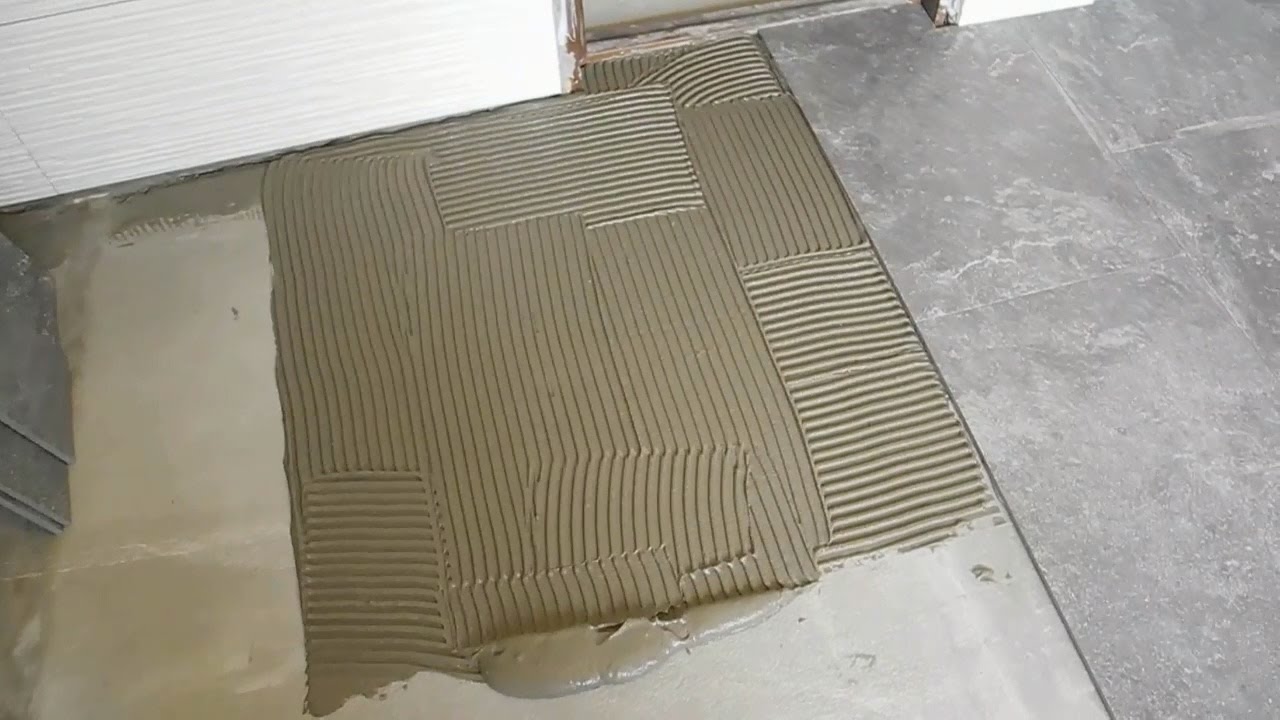
Thickness of adhesive for floor tiles
When planning a floor covering using floor tiles, it is very important to carefully calculate everything. To do this, it is necessary to take into account such parameters as the size of the tile itself, and the thickness of the tile with adhesive on the floor is also important. Therefore, it is necessary to take into account such a parameter as the thickness of the adhesive layer.
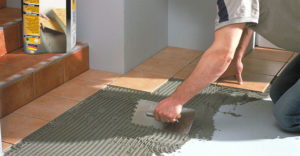 These parameters are very important, because if you miscalculate, you will eventually have to cut the doors to the height, otherwise they will not function. Other problems of this kind may also arise. The required thickness of glue will depend on the quality of the base. Let's assume that you are working on a flat base, in which case, for tiles measuring 300x300 mm, experts recommend applying adhesive up to 4 mm thick. If the tile area is larger, the thickness of the adhesive layer must be increased, for example, to 7 mm. When working with an uneven base, the glue thickness can reach 20 mm.
These parameters are very important, because if you miscalculate, you will eventually have to cut the doors to the height, otherwise they will not function. Other problems of this kind may also arise. The required thickness of glue will depend on the quality of the base. Let's assume that you are working on a flat base, in which case, for tiles measuring 300x300 mm, experts recommend applying adhesive up to 4 mm thick. If the tile area is larger, the thickness of the adhesive layer must be increased, for example, to 7 mm. When working with an uneven base, the glue thickness can reach 20 mm.
IMPORTANT.If the difference in height of the base in the room is more than 20 mm, before starting work it is recommended to level the base using a cement-sand screed.
Minimum and maximum value
The glue can be applied in different thicknesses, but there are certain limitations. In order to securely fix parts to the surface, maximum and minimum limits must be observed.
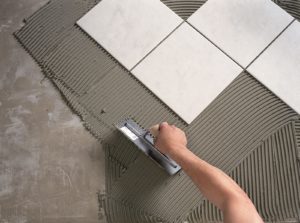 The minimum border should be determined depending on the size of the tile and the characteristics of the base, but this is a layer of at least 2 mm. If you are working with heavy and large tiles, this parameter should be increased to 4–5 mm. Now it’s time to figure out the maximum value. As a rule, increasing the thickness of the adhesive layer is necessary when working with an uneven base. If we are talking about significant flaws, it would be better to initially level it, and only then start laying the tiles. When laying a large layer of glue, this can lead to poor adhesion and, of course, waste of money and materials.
The minimum border should be determined depending on the size of the tile and the characteristics of the base, but this is a layer of at least 2 mm. If you are working with heavy and large tiles, this parameter should be increased to 4–5 mm. Now it’s time to figure out the maximum value. As a rule, increasing the thickness of the adhesive layer is necessary when working with an uneven base. If we are talking about significant flaws, it would be better to initially level it, and only then start laying the tiles. When laying a large layer of glue, this can lead to poor adhesion and, of course, waste of money and materials.
Common parameters of porcelain stoneware
A material such as porcelain stoneware differs from ceramics in its properties, shapes, and parameters. The sizes of porcelain stoneware can be different and range from 300x300 mm to 1500x1500 mm. This variety is very practical, since it is possible to select the required sizes, which eliminates the need for cutting it.
Based on the thickness parameter, it can be divided into three main categories:
- Thin, in this case the thickness is 3–7 mm.
- Average. The thickness is 8–18 mm.
- Thick. Here the thickness is in the range of 19–30 mm.
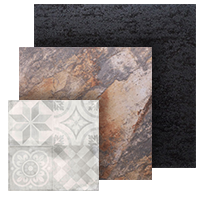 The most widespread are porcelain tiles with a thickness of 9–14 mm.This parameter will be sufficient for use in residential premises, as well as in premises for other purposes. Experts usually recommend using thicker parts in unusual areas. These are open areas and industrial buildings. For laying these large parts when working on a flat surface, 5-7 mm will be enough glue, but if you have to work with serious flaws, this figure can be increased to 25 mm.
The most widespread are porcelain tiles with a thickness of 9–14 mm.This parameter will be sufficient for use in residential premises, as well as in premises for other purposes. Experts usually recommend using thicker parts in unusual areas. These are open areas and industrial buildings. For laying these large parts when working on a flat surface, 5-7 mm will be enough glue, but if you have to work with serious flaws, this figure can be increased to 25 mm.




